
Specialty Spanish
Ideas and Resources for Spanish Teachers


Spanish Travel Unit for Year 2 or 3
Do you have a Spanish Travel Unit in your curriculum? We do, and we combine it with the preterite tense to help students talk about trips they’ve taken in the past. Over the years, I’ve created every resource I need to teach this unit without a textbook! So if you are a) a new teacher with no resources yet b) a teacher without enough resources from their curriculum or c) a teacher who needs some new things to spice up their Travel Unit, this one is for you! Here’s what my Spanish Travel Unit has!
Organization of the Travel Unit
Table of Contents, Activities Chart and Teacher Notes help you get started and see the entire unit outline.

Each daily lesson is laid out in steps, and each activity you need is linked in! This Spanish Travel Unit is so easy to use!
Culture Activities For This Spanish Travel Unit
In addition to a vocab list and grammar notes, there are lots of culture activities that make this travel unit interesting and relevant to students. They will learn about Youth Hostels and about a trip to the beach (Benidorm, Spain.) These are very short presentations by the teacher, accompanied by beautiful images. But then the students take over and do reading, writing, listening and speaking activities to go deeper with their learning.

Travel Unit Assessments
This travel unit is designed to give the teacher and/or students choice. By looking ahead, you can see that you can end the unit with either a speaking assessment or a writing assessment. And you can tailor your class activities a bit the week before to match how they will be assessed! Assessments and study guides for both speaking and writing are included!
Questions About This Travel Unit?
If you want to know more about this Spanish travel unit for Year 2 or 3, here’s how to find out more!
Spanish 2 & Spanish 3 Travel Unit: 6 Weeks of Lesson Plans for Travel, Vacation
Spanish Youth Hostels: Presentation, Video, Reading
Spanish Seal of Biliteracy Listening & Speaking for Travel and Vacations
Other Posts You May Like
Youth Hostel Lesson Plan For Spanish Class
Spring Lesson Ideas for Spanish Class
Spanish Class Seniors

AP Lesson Plan, Posters, Lesson Plan Templates, Goal-Setting, Presentations How-To Handouts, and more!
Get the password to my FREE Resource Library!!
Click here!
Spanish 2 & Spanish 3 Travel Unit: 6 Weeks of Lesson Plans for Travel, Vacation

- Google Docs™
Description
Are you teaching a Spanish 2 or 3 unit about Travel and Vacations ? Exhausted from creating all of the activities your students need to be successful? This unit called “Nuestras vacaciones” includes EVERYTHING you need to teach this unit, without a specific textbook ! Reading, writing, speaking, listening and cultural activities are all included, along with step by step lesson plans, homework assignments, assessments and answer keys. Save your time and energy for the millions of other things teachers must do!
Being a new teacher or even teaching a new course can be so overwhelming and so time consuming. Even districts that have textbooks don’t always provide all of the individual activities students need for practice in building both performance and proficiency. These lesson plans are designed for about 5 weeks (5 classes a week) for any curriculum teaching about travel and vacations and the past (preterite) tense. They are written day by day, week by week, in a logical sequence. Each activity is linked into the lesson plans, so you don’t need to go searching for what you need. Everything is made with Google Docs or Google Slides, so you can modify if you want or need to change anything!
These lesson plans combine all of the best practices of World Language Instruction. Grammar is embedded into comprehensible input, but specific notes and practices for grammar are also provided. There are TONS of contextualized practices to increase proficiency, but there are also discrete practices to help students memorize vocabulary and endings to help them along faster! I try to marry performance (being able to communicate on a very specific topic) with proficiency (a person’s overall ability to communicate).
Preview, print or post, and go!
Check out the learning objectives and activity count here!
All of these activities are included in these lesson plans, along with many more which cannot be bought separately.
1. Spanish Irregular Preterite e-i Interactive Google Slides with Pear Deck
2. Spanish Youth Hostels: Presentation, Video, Reading
3. Vacaciones en España Culture Presentation with Linked Activities Past Tense
4. Spanish Writing Prompt: Our Vacation Past Tenses Group Challenge
5. Spanish Task Cards: Travel Situations for Speaking or Writing!
6. Spanish Partner Conversations about Travel and Vacation: Guided Conversations
7. Spanish Verb Conjugating: Minuto Loco Print or Digital!
8. Spanish Write, Speak and Listen Activity: Any Level!
9. Spanish Seal of Biliteracy Listening & Speaking for Travel and Vacations
10. Spanish Boom Cards for Regular Pretertite and Ir Travel Theme
Why should you trust me? I have 23 years of experience as a high school Spanish teacher in years 1, 2, 3, 4 and AP Spanish. I have taught both with and without textbooks. Once the pandemic hit and we did not have access to our resources at school, I created most of the materials my students needed on my own. I love designing lesson plans and student activities that are based on growing proficiency and setting students up for success! I am happy to answer questions and help with any needs as you work through these lesson plans.
If you want to read some testimonials about my lesson plans, check out the feedback on my AP Spanish lesson plans HERE!
Consider asking your district to buy this product for you!
**Please be sure to buy additional licenses if more than one teacher plans to use this resource.**
Who can use this product?
- This unit is appropriate for Spanish 2 or Spanish 3 students
How can I use this product?
- These unit plans will take you through approx. 5 weeks of school
- Teach basics; grammar (preterite regular and irregular) and vocab related to travel and vacations (vocab list included)
- Practice proficiency-based Seal of Biliteracy activities
- Learn about families in different societies using curated articles, podcasts, class discussion, videos, free writing, and more!
- Formative, Interim and Summative assessments included!
What’s included in this product?
- 278 total pages/slides, etc.
- Teacher notes about the design and use of these lesson plans
- A table of contents which states each day’s learning objectives
- An activity count, so you can see exactly how many resources are included
- 5 weeks (30 days) of lesson plans, spelled out step by step, with all activities linked in
- The extra 5 days are an alternate to week 5, allowing you to differentiate for a writing or speaking summative
- Every activity, quiz, homework, assessment, study guide, etc is included!
- Pre-made Quizlet for the vocabulary
- 10 reading activities
- 13 writing activities
- 8 speaking activities
- 11 listening activities
- 3 activities specifically focused on culture
- 21 grammar or vocab focused activities (quick practices/homeworks)
- 2 formative assessments
- 2 interim assessments
- 2 summative assessments
- Study guides
- Answer keys
- 5 activities that prep students for tests for the Seal of Biliteracy
- 7 activities that combine 2 or more skills (reading, writing, speaking, listening)
- Everything can be edited if you would like
- Everything is created and ready to use if you would like!
Other resources you may like:
AP Spanish Lesson Plans for the Whole Year Without a Textbook!
Spanish Seal of Biliteracy Test Prep Bundle
Task Cards for Present, Past and Future Spanish Speaking and Writing
Visit my store to see other products you might like! Click here to follow me on TpT to find out about Freebies, Sales and New Resources!
Instagram: @specialtyspanish
Blog: www.specialtyspanish.com
Sign up HERE for my free resource library!
Pinterest: @specialtyspanish
Email: [email protected]
Please consider leaving a review! Your feedback helps me to improve, and you can earn credit towards free TpT products for every review that you leave!
Questions & Answers
Specialty spanish.
- We're hiring
- Help & FAQ
- Privacy policy
- Student privacy
- Terms of service
- Tell us what you think

Frequently Asked Questions
Welcome to spanish 3, subject organization, standards in spanish 3, question types, our help center is always available.
- El Mundo / The World
- Entreteniemento / Entertainment
- La historia / History
- ¿Cómo te sientes? / How Are You Feeling?
- ¡De viaje! / All About Travel*
- Conoce la ciudad / Get to Know the City*
- ¡Vamos de compras¡ / Let's Go Shopping!*
- Vida en colegio / Life in High School*
- El mundo del trabajo / The World of Work*
- Celebraciones / Celebrations*
- Vocabulary | Universe
- Grammar | Direct and Indirect Object Pronouns
- Grammar | Impersonal se
- Reading | Sistema Solar
- Listening | El clima
- Multiple Choice
- Multiple Select
- Two-Way Tables
- Fill-in-the-blank
- Snippet Select
- Skip to primary navigation
- Skip to main content
- Skip to primary sidebar
- Skip to footer
Speaking Latino
Teach and Learn Real World Spanish
Spanish Intermediate-Advanced Class: 20 Spanish 3 Lesson Plans for High School

In a Spanish 3 class high school students continue to expand upon the basics of Spanish grammar and sentence structure that were introduced in Spanish 1 and 2. They learn more advanced grammar topics such as the conditional mood, relative clauses, and present subjunctive. They work on conversation practice with other classmates or explore additional culture-based topics like customs, holidays, and festivals in Spanish-speaking countries. Additionally, they should be evaluated on their speaking and writing abilities with tests and assessments.
20 Spanish 3 Lesson Plans for High School Students
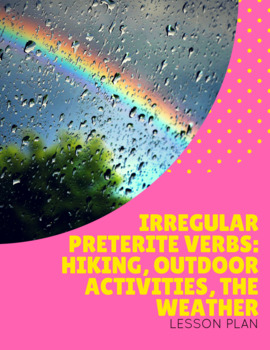
After completing this lesson, students will be able to describe outdoor activities, hiking in detail, the weather and weather forecasts, and talk about past events, especially using irregular preterite verbs.
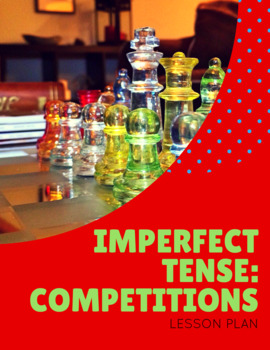
This lesson uses sports competition vocabulary to practice the imperfect tense. Students will watch an authentic video in Spanish to explore the vocabulary and to introduce them to the imperfect tense.
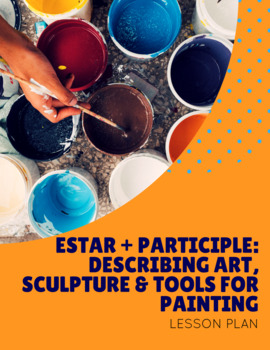
Students will be exposed to the lesson vocabulary with an interactive infographic. Then, they will learn about the form estar + participio with a class discussion using an explainer chart. Finally, they will do an oral practice where they will describe art pieces using the learned vocabulary and form.
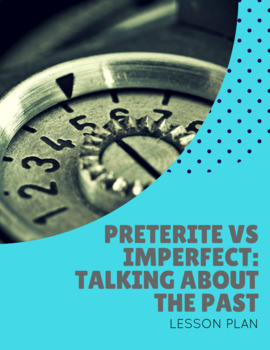
Students learn about Preterite and the Imperfect with an educational video. They do two separate practices to help them understand the difference. They tell a story in the past based on what they saw in short, silent video clips.
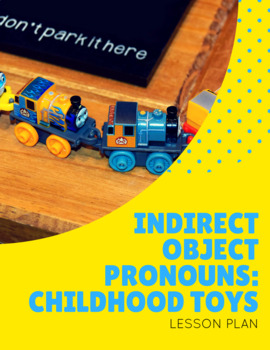
Students get familiarized with the vocabulary with an authentic video in Spanish. Includes presentation slides to explain the indirect object pronouns and two oral activities where students combine the vocabulary and the use of the indirect object pronouns.
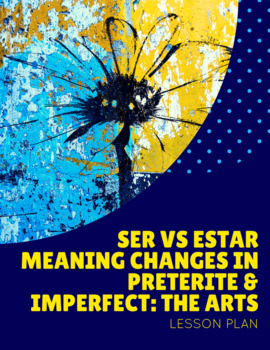
Students learn about the differences between Ser vs. Estar with a biography text from a famous singer. They will use authentic biographical information in Spanish of important personalities from different art fields to do role plays using Ser and Estar.

Students will be able to understand when commands are being used, specifically in the usted, and ustedes form use them to give nutritional advice and advice about related health issues.
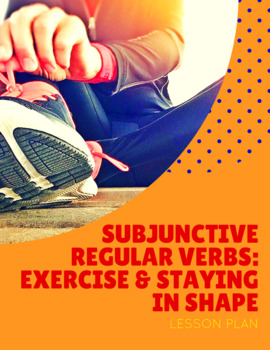
Students learn about regular verbs and how to conjugate them in the subjunctive mode. They will also learn vocabulary related to exercise and staying in shape. They will learn the topic by interacting with their teammates, improvising situations, and playing games.
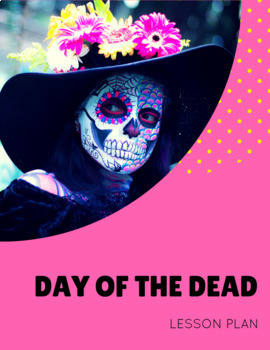
Students learn about the origin of the Day of the Dead and discuss the concept of ‘cultural syncretism’. They will discover the deeper meaning of the festival through a video and learn some of the elements that are part of the festival. Finally, they watch a video about the influence of Halloween on the traditional Day of the Dead in Cancun.
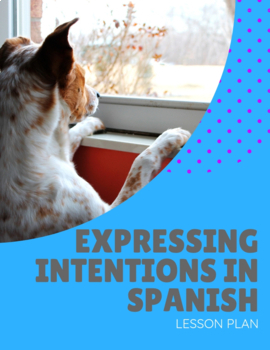
By the end of this activity, students will have learned three different ways to express intention in Spanish. At the same time, students will review grammar rules around the use of the future tense, the use of para, and the use of the subjunctive mood.

Students learn Christmas vocabulary as well as some Christmas traditions from Spain and Latin America. It begins with an image-text inference activity to learn Christmas vocabulary. Then students learn Christmas traditions from Spain with a presentation and authentic videos.
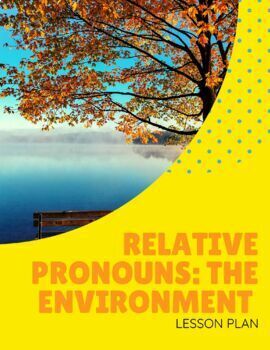
In this lesson, students learn about the relative pronouns and use the environment vocabulary to practice. They will use the instructions of several eco-friendly projects to create an oral presentation using relative pronouns. They will also play a game in pairs where they join two sentences using the relative pronouns.

Students explain some facts about endangered animals, including expressing reasons for the extinction of species, the regions it might affect, etc. and understand when the present subjunctive is being used in combination with certain expressions to signify certain nuances.
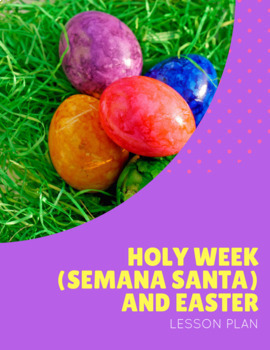
Students read a text in Spanish about Holy Week traditions. They identify cognates, answer reading comprehension questions, and prepare a presentation about specific traditions mentioned in the reading. Includes the audio file for the reading.
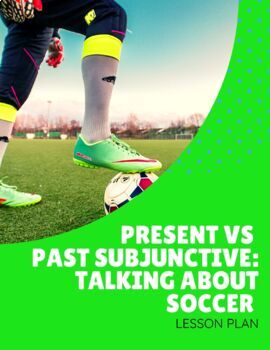
Students use an infographic to learn about the soccer vocabulary in Spanish and watch an authentic video about what could have happened if Messi (Argentine soccer star) would have been Mexican. Then, they study the presentation Present vs. Past Subjunctive and do an oral exercise using what they have just learned in class.
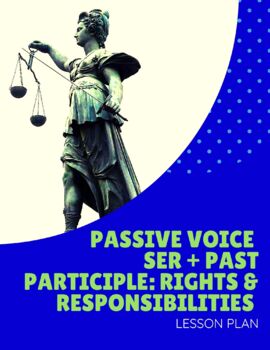
Students will be able to discuss rights and responsibilities with someone, giving opinions about the importance of certain rights and responsibilities and understand when the passive voice is used in a variety of texts to emphasize the topic of a sentence.
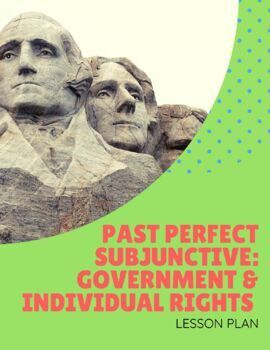
With two authentic videos in Spanish, the students will learn about human rights and the government. The past perfect subjunctive is introduced with the achievements of important human rights figures and what they did. Finally, they will do an oral practice with a series of situations provided by the teacher.
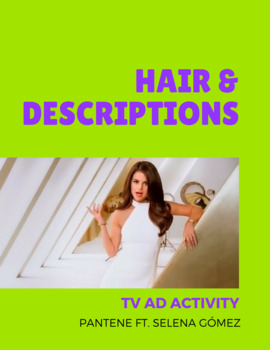
Students learn hair care vocabulary and recommend products or hair accessories in Spanish.

In the lesson, students explore the birthdays and parties’ vocabulary with a scene from a movie. Then, they watch an educational video to learn about the Conditional Perfect and how to form it. They will do an oral practice of the Conditional Perfect based on a grid with images and use an article to debate what they think would have happened if the circumstances of 9 historical events were different.
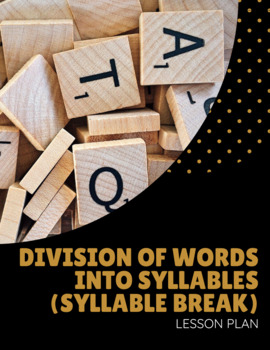
By the end of this lesson, students will know the rules to break words into syllables in Spanish and identify diphthongs, triphthongs, and hiatus. They will also learn when a word needs a written accent mark.
Click here for more Spanish Lesson Plans .
Diana Caballero
I'm Jared's wife and a dedicated contributor to Speaking Latino, the Spanish Teachers Community, and the World Language Teacher Summit.
Join the Community
Get Outstanding Student Results with Done-For-You Lessons, Activities & Resources That Can Cut Your Prep Time By 10 Hours A Week!
Get on the Invite List
Contact Jared & Diana
Click here to contact us
Search Speaking Latino
This guide has 33 pages and covers grammar such as verbs, tenses, structure, and conjugations.

Maximizing Your School Vacations

A Guide to Choosing the Right Professors

Best Majors for Medical School

Best Foods to Eat for Studying

Staying Healthy at School

How to Combat Test Anxiety

How to Pay Better Attention in School

Digital Detoxes

Benefits of Being a Musician

Ivy News: Columbia Drops out of Undergrad Rankings
Ivy news: brown university student protests, ivy news: harvard university president resigns.

Learning New Languages (Scientifically)

How to Study for the MCAT

How to Combat Procrastination With Science

Psychology of Color in Study Spaces

5 Ways to Level Up Academically This Winter

The Importance of Proper Nutrition: Perform at Your Best

Is Music Useful for Studying?

How to Learn a Language as a Full-Time Student

How to Get a 5 on AP History Exams
Blog articles.

GET THE LATEST FROM SIMPLE STUDIES + FRANK ADVICE
Get updates on resources, scholarships, & more 👇.

- Story Scripts
El viajero story script and Lesson Plans for travel and immigration vocabulary
April 28, 2013
We just finished an introductory unit on migration and undocumented immigration in Spanish A. We focused on high-frequency, regular -ar verbs that connect with travel, and we started building their familiarity with the verbs using the story script for El viajero . Afterward, we spent a few days using by-design and authentic resources to learn more about migration.
This unit fits in well to prepare vocabulary for or use with Esperanza , and you could also easily work in the song A Las Tres or the documentary They Come to America .
CORE VOCABULARY
llega a un país - s/he arrives to a country
regresa ahí - s/he returns there
lleva - s/he takes along, takes with (carries)
STORY SCRIPT
The main character travels to many different countries. Each time, someone that they love at home (a parent, friend, sibling, significant other) tells them to bring something specific back for them when they return. But each time when the main character arrives at the country, they are distracted by someone or something and do not end up bringing back the special item with them.
The story script for this unit is available in Spanish and English for FREE in our Subscriber Library.
- SUBSCRIBE TO ACCESS FREE RESOURCE
All story scripts shared at www.comprehensibleclassroom.com are licensed under a CC-BY-SA-NC 3.0 license: You are free to copy and redistribute the material in any medium or format and remix, transform, and build upon the material under the following conditions: You must give appropriate credit, provide a link to the license, and indicate if changes were made. You may do so in any reasonable manner, but not in any way that suggests the licensor endorses you or your use. You may not use the material for commercial purposes. If you remix, transform, or build upon the material, you must distribute your contributions under the same license as the original.
LESSON PLANS
To take this script from story to content-based unit, grab the Somos 1 Unit 17 lesson plans. Original and Flex versions are available:

More from the blog

- Our Approach
- Activity Tutorials
3 ways to co-create inclusive stories
Learn three areas in which you can create space for LGBQT+ characters, families, and celebrities in your TPRS® stories.

"I don't understand how to ask a story."
All students are capable of acquiring language. Discover training and curriculum that empower teachers and learners to unlock potential.

New TPRS script for La madre de Jasón
Join our newsletter.
Subscribe to our newsletter and get instant access to 150+ free resources for language teachers.

Easy Peasy All-in-One High School
An extension of the easy peasy all-in-one homeschool, found a problem check here ..
Recommended: 10, 11
Prerequisite: Spanish 2
Test Prep: CLEP Spanish (You should finish all your years of Spanish study first before taking it.)
Course Description : Students will grow in their ability to speak, write, read, and understand Spanish. Students will study vocabulary, grammar and culture while working on these skills. Grammar covered in this course includes preterit, imperfect, and future tenses; regular and irregular forms; direct object and indirect object pronouns; and correct usage.
This course is two in one. It’s based on GVL’s Spanish 3 course . The vocabulary and many activities come from there. Interspersed with those materials is a grammar course based on John Turner’s All the Spanish Grammar You Really Need to Know ( license ). When you aren’t receiving a score for something, use it as a learning opportunity. You may not know all the answers (so I didn’t have you score it), but you can learn from your mistakes and come away knowing all the answers.
You should get in the habit of reading over your vocabulary each day before you start your lesson. You should also get in the habit of writing out your vocabulary and verb conjugations and such. It’s one thing to think a word; it’s another to actually produce it.
Lesson 1(*) (Note that an asterisk * indicates that there is a worksheet on this lesson.)
Welcome to your first day of school! I wanted to give you one important reminder before you begin. Many of your lessons below have an internet link for you to click on. When you go to the different internet pages for your lessons, please DO NOT click on anything else on that page except what the directions tell you to. DO NOT click on any advertisements or games. DO NOT click on anything that takes you to a different website. Just stay focused on your lesson and then close that window and you should be right back here for the next lesson. Okay?
- If you didn’t get here through My EP Assignments , I suggest you go there and create an account.
- (*)Print out your first quarter grading sheet or use the Excel version.
- Let’s start with review.
- Review the alphabet .
- Read about consonants and vowels in Spanish and complete the exercise.
- Check your answers .
- This is the end of your work for this course for your first day. You are allowed to move at your own pace (this is homeschooling), but it’s intended you complete one lesson a day.
- Read about spoken and written accents in Spanish and complete the exercise .
- Review numbers 1-100 .
- Work with the flashcards . Make sure you read the numbers and identify them.
- Can you spell them? Try to fill in the blanks in both sets.
- Review the months . Make sure you practice spelling.
- Take the quiz . Click play quiz and start typing in the month names in any order.
- Review the days and seasons .
- You could try an activity . Click play game.
- Review the question words .
- Review present tense verbs .
- Take a quiz . Click make quiz.
- Read over more conjugations . Write some out for practice.
- Can you fill in the blanks with the correct verb and form?
- Review stem-changing verbs in the present tense.
- Take the quiz (10 questions) and record your score out of 5, a half a point for each correct answer. Spelling counts!
- Review more stem-changing verbs .
- Take the quiz and record your score as above.
- Fill in the blanks with the correct form of the verbs .
- Record your score out of 8. (There are two sections. Score 1/2 point for each correct answer. Spelling counts!)
- Conjugate the verbs .
- Review preterit verbs . Note: the word “preterit” can also be spelled “preterite.”
- Take a quiz and record your score out of 5. Score half a point for each correct answer. Spelling counts.
- Review stem-changing verbs .
- Take a quiz and record your score, same as above.
- Continue to review preterit forms .
- Review the preterit for ser, dar, ir, hacer .
- Take a quiz and record your score out of 5 (as usual).
- Review the preterit . Write out some conjugations without looking and then check your spelling.
- Fill in the blanks with the correct form of the preterit .
- Record your score out of 10. (1/2 point for each correct answer. Remember that spelling matters!)
- Fill in the blanks with the correct form .
- What can you read of this activity ?
- Review gender and plural.
Lesson 14(*)
- (*)Read over your vocabulary list .
- Review the words and practice them out loud. Can you put them in sentences, just out loud?
- Review the page on indefinite articles , the contraction of del and al , and negation.
- Practice with articles .
- Review your vocabulary for this unit.
- Review this grammar page on adjectives and compound nouns and complete the exercise.
- Review telling time and common expressions with tener .
- Practice with tener .
- Translate five sentences from the top section of this review page .
- Check and correct your answers .
- Use the map to answer the questions .
- Check your answers . Record your score out of 4.
- Watch this video on the uses of ser and estar .
- Here’s a chart summary .
- Review the present tense of ser and its uses if you think you need to. (This is very short.)
- Choose the correct verb . (Do both sections. Look at the feedback after each choice.
- Watch this video on directions . Taking notes might come in handy very soon!
- Enter the correct form of ser .
- Record your score out of 10.
- Choose the correct answer, ser/estar .
- Record your score out of 8.
- Write a 15-sentence dialog asking for and receiving directions.
- Use vocabulary from this section (Lesson 14).
- Use correct spelling and verb conjugations.
- Correct your 15-sentence dialog asking for and receiving directions if need be. You will receive points for spelling and usage!
- Practice reading your dialog out loud. You will have to play both parts of the dialog.
- When you are ready, read it out loud to an audience.
- Score up to 1 points for each sentence (out of 15) if you followed the directions.
- Score up to 5 points for accuracy. Parent, ask your child to show you where to find some of the words or phrases in the learning material for you to check on the accuracy of the spelling.
- Score up to 5 points for fluency (not stumbling, reading confidently).
- Record your score out of 25.
- Use this picture to describe the locations of two things. Use the vocabulary list and ser and estar. Write three sentences for each.
- Score up to 3 points for each sentence (out of 18) if you followed the directions and wrote in complete sentences. Score up to 7 points for accuracy. Parent, ask your child to show you where to find some of the words or phrases in the learning material for you to check on the accuracy of the spelling.
- Use this picture to describe the locations of two other things. (Yes, it’s the same picture.) Use the vocabulary list and ser and estar . Write three sentences for each.
- Review the vocabulary from Lesson 14.
- Read the page on questions and complete the exercise .
- Complete the review assessment .
- Score up to 2 points for each sentence. Check spelling and accents!
- For 3 more points, come up with examples where Spanish uses the definite article and English doesn’t and/or when English uses the indefinite article and Spanish doesn’t.
- Record your score out of 23.
- I hope you learned your vocabulary! You may review the words before you take the test, but then you need to put away all notes and close all other windows/tabs, etc., on your computer. If you cheat now, it will just show later when you don’t know the words!
- Take a vocabulary test on the words from Lesson 14.
- Record your score out of 20.
The Future Tense
Lesson 28(*)
- (*)Read over the vocabulary list of professions .
- Work on learning them. You might want to copy them since many are easy to remember but are harder to spell exactly. You’ll need to be able to spell these!
- Try some vocabulary activities to practice the words. Some will help you practice spelling.
Lesson 29(*)
- (*)Read over the vocabulary list of technology .
- Work on learning this vocabulary and the professions . Make sure to listen to these new words.
- Answer the question at the bottom of the page in complete sentences.
- You need to be learning your vocabulary. Make sure you can spell the professions!
- Record 5 points if you answered the question in a complete sentence (or two) stating how you like to communicate with your friends and why.
- Watch this video on the future tense .
- What are two ways the future is formed? When would you use each form?
- Practice writing out the future tense conjugation.
- Fill in the blanks with the future tense . Check your answers.
- *Print out this blank verb forms sheet . Fill in the present and future of a verb that you know. Fill in the preterit as well. Hold onto this.
- Watch the video on the future tense.
- Fill in the blanks with the correct form of the future tense .
- Check your answers.
- Record your score out of 17 (potential for extra credit).
- Read this poem as best you can. You can click on words for pictures of their meanings.
- Fill in the blanks with the future tense .
- Read the translation of the poem.
- Now click on the poem link in number one above and read the poem one more time in Spanish.
- Go over these university vocabulary words .
- You are going to write 10 sentences talking about your future or the future. You must include profession and/or technology vocabulary from this unit. You must also use the future tense!
- You can finish this on Lesson 35.
- Make sure your spelling and conjugations are accurate!
- Finish your sentences about the future.
- Practice reading them out loud.
- Score up to 1 point for each sentence (out of 10) if you followed the directions.
- Watch episode 1 of Destinos and listen.
- Read the page on adverbs and complete the exercise.
- Make sure you know the vocabulary from this unit. Can you spell the professions?
- Read the page on negative and indefinite words and complete the exercises.
- Make sure you know the vocabulary from this unit.
- Read the page on demonstratives and complete the exercise.
- Your test is on Lesson 41.
- Review stem-changing verbs and complete the exercise.
- Complete this exercise .
- Score half a point each for the answers in number 1. That’s 5 points. Count your correct answers for number 2. There are forty.
- Record your score out of 45.
- Take your professions test . NOTE! After each one, check your own work! It will mark it incorrect, but it will show you the correct answer options. You may write either the masculine or the feminine. If you spelled it perfectly, including el or la , then you get one point. You get no points for a word not spelled perfectly.
- Record your score out of 15 (potential for extra credit).
- Take the technologies test .
- Record your score out of 9.
Lesson 42(*)
- (*)Read over your new vocabulary and practice it. Writing it out is a good way to help get it in your brain and to learn the correct spelling.
- Listen to the vocabulary words . You can use this to practice as well.
- “¿Prefieres viajar en avión o tren? ¿Llevas muchas maletas? ¿Tienes un pasaporte? A mí no me gusta mucho ni despegar ni aterrizar en avión. Es la razón que prefiero viajar por los trenes. Hay que tener un pasaporte y tu billete pero no hay tanta seguridad y hay muchos baños y opciones para la comida en un tren. Los trenes llegan a tiempo también. Puedes tener una gran vista en cada asiento y hablar con otros pasajeros. Normalmente visito un kiosco y compro una revista o un libro para leer antes de ir. Descanso y tomo un café. ¡Es una gran manera para viajar!” (from http://cms.gavirtualschool.org/Shared/WorldLanguage/SpanishIII/SP3_Viajemos_SOFTCHALK/index.html)
- Does the author prefer to travel by planes or trains? Why? Tell someone what it seems the author likes to do on trains. (answers: trains; She doesn’t like the taking off and landing of planes; talk to other passengers, read a book, drink coffee, other possibilities )
Lesson 44(*)
- (*)Answer the following questions the best you can from listening to these speakers talk about their first airplane ride.
- Check your answers . Record your score out of 8.
- Watch this video on the conditional verb form .
- Here’s a chart to help you.
- Write out the conjugation of the conditional verb form for comer, vivir and hablar .
- Check your work. Read over this page and then write out the conditional conjugation of an irregular -ir and – er verb.
Time for a report card and portfolio/records updating.
Portfolio/records: In your portfolio you should include a couple of your assignments from this quarter. You could also take a screen shots of different quizzes/exercises. Keep your written work. Choose things that are neat and well kept.
This is how you find your grade: add up all the grades you have been recording for this quarter. Add up your scores and write that number down.
Divide your score by total possible. Move the decimal point over two places to the right. In the next box over, write the number in front of the decimal (something between 1 and 100). This is your percent grade. In the next box over write your letter grade. Anything starting with a 9 is an A. Anything starting with an 8 is a B. Anything starting with a 7 is a C and so forth. If you have everything perfect, then your grade is 100. That’s an A too.
Your goal is to get an A for the course at the end of the year. Go back and look at where you lost points. What can you do to avoid losing those points in the next quarter?
Lesson 46(*)
- (*)Print out your second quarter grading sheet or use the Excel version.
- Look at and listen to the lesson on the conditional .
- Click on the quiz at the bottom.
- Record a score of 5 for completion.
- Read this poem as best you can. Use the links within the poem for vocabulary help.
- Read the translation.
- Now go back and read the poem out loud as best you can.
- Give yourself 1 extra credit point if you read it to an audience.
- Fill in the conditional forms of the verbs.
- Practice your vocabulary. Have you written it out to practice spelling?
- Write 12 sentences about a Spanish-speaking country you want to visit. Talk about how you would travel there, how you would travel while you are in the country, and what you would like to see and do there. Use travel vocabulary and the conditional tense. You have three days to work on this. Look up the country you are choosing and learn a little about it for inspiration.
- You will finish and present on Lesson 51.
- Write 12 sentences about a Spanish-speaking country you want to visit. Talk about how you would travel there, how you would travel while you are in the country, and what you would like to see and do there. Use travel vocabulary and the conditional tense. You have one more day to work on this. Make sure to use correct spelling and conjugations.
- Finish writing 12 sentences about a Spanish-speaking country you want to visit. Talk about how you would travel there, how you would travel while you are in the country, and what you would like to see and do there. Use travel vocabulary and the conditional tense.
- Practice reading it.
- Score up to 1 points for each sentence (out of 12) if you followed the directions.
- Score up to 5 points for accuracy. Parent, ask your child to show you were to find some of the words or phrases in the learning material for you to check on the accuracy of the spelling.
- Score up to 5 points for fluency, not stumbling, reading confidently.
- Record your score out of 22.
- Read about future tense with ir a and complete the exercise on the page.
- Read about personal a and complete the exercise.
- Read about conocer and saber and complete the exercise.
- Read about relative pronouns and complete the exercises.
- Read about possessives and complete the exercise.
- Complete the exercise .
- Your score is out of 35. (35 blanks)
- Read the paragraph out loud in Spanish.
- Watch episode 2 of Destinos .
- Take a vocabulary quiz on transportation .
- Record your score out of 24.
- Take out your verb sheet and fill in the conditional conjugations.
Lesson 59(*)
- (*)Look over your new vocabulary .
- Listen to the vocabulary words .
- Did you copy the words to practice spelling?
- Read this biography of Picasso as best you can and answer the questions .
- Record your score out of 7.
- Watch the video on por vs. para .
- Read more on por vs. para .
- Study por vs. para .
- Take the quiz .
Lesson 63(*)
- (*)Look at the different uses of por vs. para .
- Watch the lesson on por vs. para .
- List three uses of por and three uses of para .
- Record 6 points for 6 uses.
- Read this story and point your mouse at each red por or para and read about its usage.
- Fill in the blanks . There’s no score for this. It will tell you the correct answer after you fill in each box.
- Write twelve sentences in which you interview a Spanish-speaking artist. Remember that the pronoun comes after the verb when asking a question. Por is used to say who created a piece of art. Use vocabulary and grammar from this unit.
- You will present on Lesson 67.
- Choose an artist. You’ll have to do a little research. Pick a piece of artwork/music/etc. to ask about.
- art history
- Use correct grammar and spelling.
- Finish your twelve sentences in which you interview a Spanish-speaking artist. Remember that the pronoun comes after the verb when asking a question. Por is used to say who created a piece of art. Use vocabulary and grammar from this unit.
- Make sure it’s correct and practice reading it.
- Review ser and estar and complete the exercise.
- Review your vocabulary from Lesson 59. Can you spell it?
- Practice the past participle .
- Review your art vocabulary for a test.
- Read about and practice the infinitive and gerunds .
- Study your vocabulary. Make sure you can spell the words!
- Take a vocabulary test .
- Record your score out of 15.
- Watch episode 3 of Destinos .
Las Diversiones
Lesson 73(*)
- (*)Go over the vocabulary for this unit.
Lesson 74(*)
- Review the vocabulary for this unit.
- (*)Go over this additional vocabulary for this unit on “diversions.”
- Listen to some of the vocabulary .
Lesson 75(*)
- Watch this lesson on the present perfect tense .
- Take out your verb sheet and fill in this tense (from Lesson 31).
- Use this chart to help you.
- Read over the lesson on the present perfect .
- Take the quiz . Complete numbers 1-20 (parts A and B).
Lesson 77(*)
- Look at your chart from Lesson 75 and listen to and read this list of irregular conjugations.
- (*)Follow the directions and write the correct form of the verb. Spelling counts!
- Complete all three sections, filling in the correct form of the verb. Follow the directions.
- Record your score out of 25. (potential for one extra credit point)
- Listen to all of the videos.
- Practice with your vocabulary .
- Translate one of the paragraphs on this sheet. Be careful to translate the verb tenses accurately. You may use an online dictionary to look up individual words, but don’t use Google Translate for phrases or sentences. Parent: if their translation sounds weird, they may have used Google Translate!
- Record 5 points for completing this assignment.
- *Print out this blank verb sheet .
- Fill it in for the verb reir, to laugh. How much can you fill in? Make sure you have the present, future, preterit, present perfect, conditional, and gerund.
- Check your work . Correct any mistakes. Spelling counts!
- Record your score out of 30. (potential for one extra credit point)
- Review the preterit and complete the exercise.
- Read the lesson on large numbers and complete the exercises.
- Review dates and weather and complete the exercises.
- Answers will vary.
- Read the lesson on both, all, and every and complete the exercises.
- Complete the quiz .
- Score up to 10 points for section A. Score up to 5 points for each sentence. Take a point off for each misspelling or incorrect word.
- Record your score out 25.
- Review your vocabulary from all units. Your test is on Lesson 90.
- Watch episode 4 of Destinos .
- Watch episode 5 of Destinos .
- Watch episode 6 of Destinos .
- Take your vocabulary midterm .
- Record your score out of 50.
Lesson 91(*)
- (*)Print out your third quarter grading sheet or use the Excel version.
- (*)Work on learning the vocabulary for this unit.
- Listen to the vocabulary .
Lesson 92(*)
- (*)Review colors and how to use them in descriptions.
- Listen to the commercial . What can you understand?
- Write sentences describing what you are wearing. Use colors (light/dark) and names of items of clothing. Write at least three sentences.
- Record up to 6 points for 3 sentences which each included an item of clothing and a color.
- Practice clothing vocabulary .
- Browse the online clothing store and read the labels. Can you read the menu and navigate the store?
- Make sure you are learning your vocabulary every day. Can you spell it?
Lesson 94(*)
- Make sure you know your clothing vocabulary.
- Give a try at reading on this Spanish wedding fashion website . You can also click around.
- Listen to the speakers talk about clothing. (*)Answer the questions .
- Record your score out of 12.
- Do you know what a direct object is?
- Practice using direct object pronouns .
- More practice
- Fill in the correct direct object pronoun .
- Record your score out of 14.
- Do you know what an indirect object is?
- Practice with the indirect object pronoun .
- Learn about using direct and indirect object pronouns in Spanish.
- Copy sentences to practice.
- Practice with the direct and indirect object pronouns .
- one , Record your score out of 10.
- two , Record your score out of 8. (potential for extra credit)
- three , Record your score out of 10.
- Take the quiz on direct and indirect object pronouns.
- Note your score out of 20.
- You may write up to five sentences using two object pronouns in each. For each object pronoun you can add a point to your score.
- Record your total out of 20. (potential for extra credit)
Lesson 101(*)
- (*)Here are vocabulary review sheets .
- Write 12 sentences describing two new outfits that you have designed. You can finish this on Lesson 102 and present it. Make sure you are using correct spelling and grammar.
- Finish your twelve sentences in which you describe clothing.
- Score up to 1 point for each sentence (out of 12) if you followed the directions.
- Watch episode seven of Destinos .
- Make sure you know your clothing vocabulary for a test on Lesson 105. Can you spell it?
- Watch episode eight of Destinos .
- Take the vocabulary test . If you can’t type Spanish letters, you can print this out and take it on paper.
- Record your score out of 15. Spelling counts! If it’s not spelled correctly, then it’s incorrect.
Los Pasatiempos
Lesson 106(*)
- (*)Start learning your new vocabulary, pastimes .
- Make sure you know and can spell the days of the week . Click on spell when you are ready.
- Practice your vocabulary .
- Make sure to practice your spelling!
- We’re going to review and practice the preterit.
- Watch this video .
- Look over the forms of the preterit and pay attention to the irregular forms.
- Complete this exercise .
- Watch this video on irregular preterit verbs .
- Complete the exercise on irregular preterit forms.
Lesson 110(*)
- Watch this video on the imperfect of regular and irregular verbs .
- (*)Complete this worksheet on the imperfect.
- Check your answers. Score 1 point for each correct verb form (out of 10). Score 1 point for each correct (including spelling) verb in the translation plus 1 point for the accuracy of the rest of the sentence (out of 16).
- Record your score out of 25. (potential for an extra credit point)
- Watch the video on the preterit vs. the imperfect .
- Watch another video .
- Are you taking notes?
- Are you practicing your vocabulary? “Lazy bones learn no Spanish.” I’m sure that’s an old saying from somewhere.
Lesson 112(*)
- (*)Read over this chart of usage of the preterit and the imperfect .
- You can also use this video to remind you.
- Fill in the blanks with the correct verb forms.
- Check your answers . Correct anything wrong and work to understand any mistakes.
- Try the exercise using both the preterit .
Lesson 115 (*)
- Remember: The imperfect is always used with weather and age.
- Score up to 4 points for each sentence. 1 point for each correct verb–spelled correctly, 2 points for the accuracy of the rest of the sentence (so you can give partial credit)
- Record your score out of 45. (potential for extra credit)
- Complete the exercise by choosing the correct verb form.
- Write three sentences about what Lucia does and doesn’t do. What are her hobbies? Use the imperfect and preterit. Use the vocabulary.
- Record up to 2 points for each sentence for using the imperfect and preterit in each sentence, plus one point for a correctly spelled vocab word.
- Write three sentences about what Fernando does and doesn’t do. What are his hobbies? Use the imperfect and preterit. Use the vocabulary.
- Complete the exercise by listening. Click on the instructions before you start. You’ll listen and do your best to fill in the blanks in the exercise links.
- Write three sentences about what Carolina does and doesn’t do. What are her hobbies? Use the imperfect and preterit.
- Write three sentences about what Eva does and doesn’t do. What are her hobbies? Use the imperfect and preterit.
- Complete the exercises by writing the correct verb form.
- Write three sentences about what Miguel does and doesn’t do. What are his hobbies? Use the imperfect and preterit.
- Listen and list a favorite activity for each.
- Record your score out of 6. One point for each person you can identify a favorite activity for.
- Study your vocabulary for the unit. Can you spell it?
- Take your vocabulary test .
- Watch episode 9 of Destinos .
- Watch episode 10 of Destinos .
- Watch episode 11 of Destinos .
- Read the lesson on the imperfect and complete the exercise.
- There are 18 blanks. Record your score out of 9, a half point each.
- Through Lesson 130 you’ll be doing these grammar reviews while learning your new vocabulary.
- Here’s your new vocabulary to be working on, la comida .
- Read the lesson on the imperfect vs. the preterit and complete this exercise.
- There are 18 answers. Record your score out of 9, a half point each.
- Be working on your new vocabulary, la comida .
- Read the lesson on using hace with time expressions and answer the questions.
- Read the lesson on ordinals and complete the exercise.
- Compete the assessment . Score up to 1 point for each numbered exercise (9 for part 1, 7 for part 2).
- For an extra credit point, choose one sentence to translate. If you are correct, add one point to your score.
- Record your score out of 16.
- Watch this tortilla video .
- Here’s vocabulary review for fruit and vegetables.
- Here’s another food practice page. This one has a lot more words.
- Here’s another food vocabulary review page.
- Write ten sentences using at least two vocabulary words from your new vocabulary list in each sentence.
- Score 1 point for each sentence with at least two vocabulary words in it. Score another point for any sentence with three or more vocabulary words in it, up to 2 extra points.
Lesson 133(*)
- Watch this video and answer the (*) questions .
- Record your score out of 5.
- Read this lesson about the subjunctive.
- The font is weird on this but try the exercise . You can use the lesson if you need it.
- Form the subjunctive .
Lesson 136(*)
- (*)Print out your fourth quarter grading sheet or use the Excel version.
- Go through these subjunctive “ triggers .”
- Take the quiz on the subjunctive.
- Practice the subjunctive .
- Write the subjunctive form of the verbs.
- Record your score out of 15, a half point each.
- Record your score out of 12, a half point each.
- Make sure you know how to spell your food vocabulary words.
- Write the subjunctive form . (16)
- Write in the subjunctive form . (10)
- There are 26 blanks. Record your score out of 13, a half point each.
Lesson 141(*)
- Watch these videos .
- (*)Answer these questions as you listen.
- Rest your brain.
- Here’s a little subjunctive practice .
- Write 10 sentence recipe using the subjunctive.
- Finish your ten-sentence recipe.
- Score up to 1 points for each sentence (out of 10) if you followed the directions.
- Score up to 5 points for accuracy. Parent, ask your child to show you were to find some of the words or phrases (food vocabulary or verbs in the subjunctive) in the learning material for you to check on the accuracy of the spelling.
- You can have 10 extra credit points if you make a Spanish-speaking recipe video. A student sent me her recipe . Want to follow along and give it a try?
Lesson 145(*)
- (*)Complete this subjunctive worksheet .
- Record your score out of 18.
- Study this vocabulary list (It’s the list that starts with “to chop”). You will have to write out the vocabulary. It’s only right if it’s spelled correctly.
- Listen to your kitchen vocabulary . Scroll down and click on the speakers.
- Watch episode 12 of Destinos .
Lesson 147(*)
- (*)Write in the vocabulary .
- Record your score out of 19.
- Watch episode 13 of Destinos .
Restaurante
Lesson 148*
- *Here are some review restaurant words .
- Cover the Spanish and try to write the words in Spanish.
- How did you do? Correct your mistakes.
Lesson 149*
- *Study your new restaurant vocabulary words .
- You can use this to listen to the words .
- Read these facts about chocolate and share a few with someone (in English).
- Here is a recipe site in Spanish. Choose something to try.
- Watch this video on formal commands .
- Read the sheet on formal commands .
- Make sure you practice by writing some out.
- Read about the exceptions to the rule.
- Review if necessary and then click to generate a quiz for practice.
- Take the quiz on formal commands.
- Score a half point for each correct answer.
- Take the quiz on formal commands .
- Score a half a point for each correct answer.
- Watch the video on formal commands in a restaurant .
- Write a dialog between a waiter and a customer at a restaurant. Write at least twelve sentences. Use your vocabulary and formal commands.
- Finish writing your sentences.
- Make sure they are correct.
- Score up 24 points for your sentences if you followed the directions.
- Read your sentences aloud. Score up to 6 more points for fluency.
- Record your score out of 30.
Lesson 157(*)
- (*)Review formal commands .
- Study your vocabulary for the unit and make sure you can spell the new vocabulary.
Lesson 158*
- (*)Take your vocabulary quiz .
- Score one point for each correctly spelled answer.
- Watch episode 14 of Destinos .
- Watch episode 15 of Destinos .
- Watch episode 16 of Destinos .
Los Quehaceres
- Review house vocabulary .
- You can listen and practice here .
- Cover up the Spanish and try to write the words. What do you already know?
- Check your work and fix mistakes.
- Learn your new chore vocabulary .
- You can listen to some of the vocabulary.
- Listen to these people talk about their homes.
- Listen without looking at the words and write down notes about their homes.
- Listen again and read along. Were you correct?
- Watch the video lesson on informal commands . Take notes.
- Read the lesson and then click to take the practice quiz.
Lesson 165(*)
- Read the lesson and take the practice quiz.
- (*)Try the worksheet on informal commands .
- Check your answers at the bottom of the page.
- Read the explanation about pronouns and commands .
- Take the commands quiz .
- Take the positive and negative commands quiz .
- Read through it with a dictionary and work on figuring it out (along with your knowledge of the story).
- Then read through it out loud.
- Use informal commands as you tell the story of chores around your home. Write twelve sentences.
- Finish your sentences.
- Record up to 2 points for each sentence if you followed the directions.
- Record up to 6 points for 6 words spelled/used correctly. Show them to your parent in the learning material.
- Record up to 5 points for fluency when you read it to your audience.
- Record your score out of 35.
- On Lesson 180 you will have a vocabulary final exam. It will be multiple choice.
- You will also present a monologue. Write a story that you will tell. My suggestion is to write about your week. It should be three minutes long. It should use vocabulary from the course and the verb forms from the course. When you write it, underline words/forms you use from the course, so that they can be checked.
- Study your vocabulary and prepare your talk.
- The vocabulary final is worth 50 points. Your talk is worth 50 points: 10 points for fluency (practice!), 10 points for correctness (checked against course material for spelling/usage), 30 points for following the directions (10 points for each minute).
- Prepare for your final.
- You can read about this girl’s chores in Guatemala.
- Take a tour of Alhambra , a palace in Granada, Spain.
- Maybe you need to rest your brain a bit. Watch an episode of Destinos .
- 30 points for a three-minute story using words and verb forms from the course.
- 10 points for correct spelling/usage
- 10 points for fluency
- Take your vocabulary final .
- We have a Spanish 4 class. This class has free teacher interaction through a forum where you will be submitting answers to assignments. The forum will be open to everyone. You can respond to posts and assignments and read the other students’ answers even if you aren’t at the same place in the course as everyone else. If you want to participate in the forum and get teacher feedback, please plan on beginning the course around the end of August/beginning of September.
- Take the polls .
Congratulations on finishing Spanish 3!
Figure out your total grade for the quarter and for the course. Record it on your transcript and create a course record.
Donate/Say Thanks
Input your search keywords and press Enter.

La Secundaria
Sharing teaching ideas for the World Language Classroom.
Travel Unit Reading Passages for Spanish Class

Do you love traveling? I love traveling and exploring so much! The list of places that I want to travel is ridiculously long and always growing. Can you relate?
I’ve been fortunate enough to explore some of the Spanish-speaking countries that I’ve covered in class and it was so exciting for me to share that with my students.
I created these Pasaportes Culturales reading passages to have student explore a variety of places in Spanish-speaking countries right from the classroom.

What do the travel unit reading passages cover?
Each travel unit reading passage in the Pasaporte Cultural Monument and Landmark Reading + Extension Activity Bundle includes:
- an overview about the monument or landmark
- illustrated important vocabulary
- origin and/or information about construction
- interesting facts
This bundle includes 10 reading passages about famous Latin American monuments and landmarks, such as the Iguazú Falls in Argentina and the Machu Picchu in Peru.

What is included in the bundle ?
These travel unit reading passages are great for helping students improve their Spanish reading comprehension skills. Your students will be able to learn about the culture and the food of different countries in Latin America.
- Spanish and English versions
- Comprehension Questions
- Prueba y Pasa – Quiz quiz trade style cards
** Originally, these resources only included the reading passages. Now, I’m working to update them all to include comprehension questions and prueba y pasa cards.
If you liked this post…
If you liked this blog post, you may be interested in these:.
- Teach Culture with Country Study Units
- 11 Blogs with Comprehensible Input Tips and Strategies

Share this:
lasecundaria.jac
Related posts.

Would You Rather Activity for Spanish Class

Color by Number Activities in World Language Classes

Valentine’s Day Acrostic Poem for Spanish Class
- All upcoming dates
Upcoming dates (0)
Not scheduled at this time. Join the mailing list .
Watch this short video about why our online Language program is one of the best in the country!
We have made this practical low-intermediate course (A2.1) even better with a new curriculum designed for adult language learners. Explore the cultural richness of the Spanish-speaking world through the voices and experiences of speakers from over 10 different countries. Learn to converse in the past tense, express opinions and discuss real-life situations from daily life, work and travel. Our adult-focused approach will improve your speaking, listening, reading and writing abilities. See Outline for more details.
Prerequisite: Spanish 2 or equivalent.
Find out if this is the right level for you with these placement tests: Spanish 2 self-placement test , Spanish 3 self-placement test .
Course format
You will practice speaking in weekly one-hour online sessions led by an experienced instructor, with a maximum of 12 participants.
The live online sessions begin one week after the scheduled course start date to allow time to work through the first unit of learning material in preparation for the live conversation practice.
Online course materials introduce new grammar and vocabulary and teach pronunciation, listening, and reading skills through videos, audio, and interactive exercises. Budget 3-4 hours a week to work through the online asynchronous content.
Course materials become available online on the scheduled course start date and remain accessible for one month after the course ends.
Want to know more about learning a language online? Read Dr. Julie Dahl's blog post about our online course format.
A printable workbook (PDF) is included in the price. All other materials are available through the course platform.
Sections anticipated for fall 2024 (See Upcoming Dates for open sections and more detail):
Wednesdays, Sept. 11–Nov. 20, 8:30–9:30 a.m. CT
Tuesdays, Sept. 24–Dec. 10, 5:30–6:30 p.m. CT (No virtual conversation on Nov. 26)
Tuesdays, Sept. 24–Dec. 10, 6:45–7:45 p.m. CT (No virtual conversation on Nov. 26)
This is an accordion element with a series of buttons that open and close related content panels.
Course Outline
Course outline
Below are the main themes and outcomes for each unit. Each unit also contains teaching videos, 10-15 listening activities, an extended reading activity, practical exercises and cultural information related to the unit theme.
Unidad 1: ¡A conocernos!
- Review conversations for getting to know people
- Common Spanish commands
- Irregular gerunds
- Using llevar to express duration
- Review common irregular verbs in the present tense
- Reading: La costumbre de la siesta
Unidad 2: ¡A aprender!
- Vocabulary: parts of speech
- Discussing study habits and learning strategies
- Going deeper with gustar and similar verbs
- Regular verbs in simple past tense ( el pretérito )
- Giving opinions: opinar, creer, pensar, deber
- Reading: Ricardo Arjona: una vida imposible de definir
Unidad 3: ¡A trabajar!
- Vocabulary: workplace
- Discussing where you like to work and what tools you need to work well
- Direct object pronouns
- Common expressions that use direct object pronouns
- Irregular verbs in the preterite
- Reading: La historia de una inmigrante
Unidad 4: ¡A viajar!
- Vocabulary: travel and housing
- Discussing travel preferences
- Understanding directions
- Describing past trips with the preterite
- Polite expressions for asking for information
- Contrast llevar and traer
- Contrast ir and venir
- Reading: Voy de viaje (una carta)
Unidad 5: ¡A repasar!
- Prepositions of place
- Impersonal se
- Review Unidades 1-4
Unidad 6: ¡A relajarnos!
- Vocabulary: free time
- Discussing ways to relax
- Going deeper with reflexive verbs
- Discussing changes in emotions
- Contrasting demonstratives: este, ese, aquel
- Reading: El poder de la música de Gustavo Dudamel
Unidad 7: ¡A charlar!
- Vocabulary: chatting and informal conversations
- Discussing different ways to communicate
- Indirect object pronouns
- Forming adverbs with –mente
- Giving opinions: (no) estar de acuerdo
- Reading: La cena es para disfrutarla
Unidad 8: ¡A tapear!
- Vocabulary: food and ordering in restaurants
- Discussing common Spanish tapas
- Present perfect tense
- Regular and irregular participles
- Contrasting indefinites: algo, alguno, alguien
- Reading: La paella: un plato que provoca mucho debate
Unidad 9: ¡A comprar en el barrio!
- Vocabulary: small shops and local businesses
- Discuss shopping and operating hours
- Using hace…que to discuss how long something has been going on
- Using hace to discuss how long ago something happened
- Time structures with desde
- Reading: Jubilarse en Cuenca, Ecuador
Unidad 10: ¡A terminar!
- Discussing moments in the future
- Review Unidades 6-10
Earn Continuing Education Hours
By participating in this class you will earn:
Explanation of Continuing Education Hours
More Spanish Offerings
- Spanish for Reading and Translation: Comprehensive More
- Spanish for Reading and Translation: Basic More
- Spanish 4 More
- Spanish 0 More
- Spanish 1 More
- Spanish 2 More
- View All Spanish Offerings
Join our mailing list
- Name * first last
- Hidden List
- Please add me to your e-mailing list.
By submitting this form, you agree to receive marketing email from UW–Madison Continuing Studies. Read our privacy policy .
- Comments This field is for validation purposes and should be left unchanged.
Program Questions?
Contact Chris Moore at [email protected] or 608-262-7389
Registration Questions?
Email [email protected] or call 608-262-2451.
Continuing Studies FAQs
Meet your instructor
Pablo pastore.
(MA, UW-Madison) is a PhD candidate in the Department of Spanish & Portuguese. He holds a BA in Comparative Literature from Universidad de Buenos Aires (2019). Pablo has taught beginner-level Spanish courses at UW-Madison in addition to teaching beginner through intermediate courses for the Continuing Studies program. He enjoys teaching adults of all levels.
What Attendees Are Saying
"I had a great time in this class, and I learned a lot. It was exactly what I needed: a low-stress learning environment." Bryn Sutherland
"I looked forward to class each week because of the instructor."
Mis Clases Locas
Mis Clases Locas Curriculum for Spanish 1-4
Inside: Scope and Sequence for Spanish 1-Spanish 4 using novels and comprehensible input curriculum without a textbook. Mis Clases Locas curriculum for Spanish class. Spanish curriculum using comprehensible input.
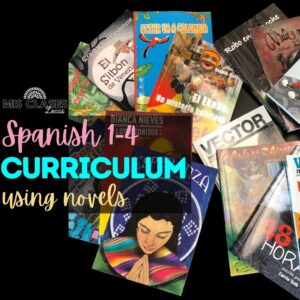
Spanish Curriculum – Mis Clases Locas Curriculum
Over the years I have looked at many different Spanish curriculum plans. Remember I have had ultimate freedom as a #deptof1. So, I have had the chance to try out a lot of different things for my Mis Clases Locas curriculum. To be honest, I started creating my own Spanish curriculum, when I realized what worked for me, was a mash-up of many different styles and resources.
First, it would be helpful to read this post – How I Create a CI Curriculum for Spanish 1-4 .
This is where you will see the thought process of lesson planning for a year, month, and week, using my lesson plan templates. If you teach French, make sure to check out French 1-4 Curriculum.
Below you will find my ideal curriculum. Click on the links for previous blog posts explaining the units or resources to make your life easier. If you are interested in getting many of the resources I use, I would suggest starting with the Spanish 1 Mega Bundle & Spanish 2/3 Mega Bundle (or the same thing on TPT Spanish 1 Mega Bundle) & Mega Bundle Spanish 2 or 3 , as well as clicking the links below.
Mis Clases Locas Curriculum – my ideal Spanish Curriculum
Since I have always taught all levels at once, my Spanish class curriculum has always been a mash-up of my own resources & resources from others. While I do not currently have my own classroom, what you see below is what I would use in my ideal situation, with the freedom to use what I want.
It is important to note that I started moving quickly to keep student interest, such as reading some books in the style of 1 novel in 1 week . This is why it might seem like I have more content listed than in other years. I also pick and choose from SOMOS units, with them typically just lasting 1 week with me cutting out the story activities and other things I am not a fan of. (For a typical story unit I: Intro vocab, do a quick story, and get right into the culture of the unit).
Spanish 1 Curriculum
Spanish 1 Mega Bundle (or the same thing on TPT Spanish 1 Mega Bundle)
(includes many resources listed below)
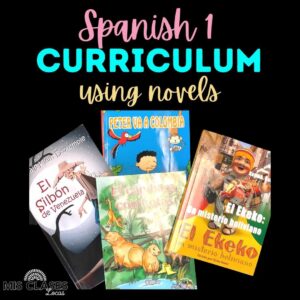
*Depending on if Spanish 1 has had Exploratory Spanish (which includes Super 7 unit , & SOMOS units 1-3 ) , will depend on where you start in Spanish 1. The plan below is assuming a quarter of exploratory.
Spanish 1 Quarter 1
- Week 1 plan with Proficiency Introduction using 1st Week of Spanish Back to School BUNDLE
- Super 7 Present Unit Bundle or from my shop Super 7 Present Tense Spanish BUNDLE
- During Hispanic Heritage Month – song of the day
- SOMOS units 1-3 review or do quickly + unit 5 (maybe Ferdinand )
- El Capibara con botas unit – w/ Ecuador Reading , Cultural Stations: Capibara y Ecuador
Spanish 1 Quarter 2
- Guapo/Calvo/Feo – Sr. Wooly Victor Trilogy Unit
- Mexico/ Day of the Dead Unit w/ Day of the Dead & Mexico introduction , Coco
- Tumba – quick novel read in the style of 1 novel 1 week
- música indígena – for Native American History Month in November
- Choice unit depending on time & access to novels El Ekeko – novel unit OR SOMOS units 6 & 7
- Navidad/ 3 Reyes – cultural unit
Spanish 1 – Quarter 3
- During February – Afro-Latinx song of the day
- Food – w/ SOMOS unit 8 – Latin Food/Elote & Canela – film unit
- Valentine’s Day Activities
- Colombia – w/ Biblioburro, Yipao & La Bicicleta
- Peter va a Colombia – novel unit & Encanto
Spanish 1 – Quarter 4
- During March – March Madness Song Bracket
- Las Fallas – Cultural Unit or get the same Las Fallas unit in my store
- Billy la bufanda – Sr. Wooly Unit
- Selena movie- (for Selena’s b-day in April) or get the same Selena guide here
- Legends Unit w/ Somos Unit 9 – El Cucuy & Chupa OR Maya y los tres
- El Silbón de Venezuela – novel unit
- Culture Project – Final or get the same project in my store
Spanish 2 Mis Clases Locas Curriculum
Spanish 2/3 Mega Bundle from my shop OR TPT Mega Bundle Spanish 2 or 3 includes many resources listed below
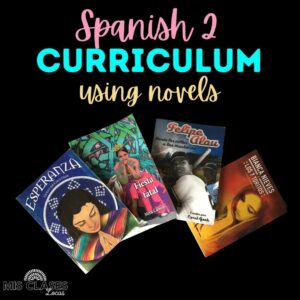
Spanish 2 – Quarter 1
- Mi verano past tense unit intro – Question Cards – Mi Verano & Find Someone Who
- La Tomatina – cultural unit
- Imperfect Unit – using Hybrid Imperfect Bundle
- Intro Past Tense Ir – FSW & Fue Question Cards + maybe some Somos 2.1/2.2
- Fiesta Fatal – novel unit
Spanish 2 – Quarter 2
- Amnesia – Sr. Wooly Unit
- Living on $1 & Which Way Home w/ Esperanza – novel unit & La Misma Luna – film
- 3 Reyes Magos & Winter Holidays
Spanish 2 Quarter 3
- Return from Winter Break
- Go! Vive a tu Manera intro & then watch each Friday
- Preterite Unit – Super 7 – Preterite Bundle
- Felipe Alou – novel unit w/ Pelotero (baseball & DR) or Vivo (Afro-Latinx) film
Spanish 2 – Quarter 4
- Las Fallas unit
- Sr. Wooly – wooly week song
- Bianca Nieves – novel unit – with Bullfighting, Spain & Ferdinand film study
Spanish 3 Spanish Curriculum
Show each Friday. For 2023 I would pick Tierra Incógnita using Tierra Incógnita Season 1 Spanish class guide. Past shows I have used are: El Internado (now hard to find & older) & Go! Vive a tu Manera (pretty cheesy)
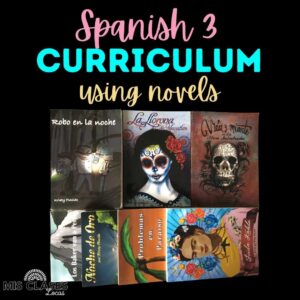
Spanish 3 – Quarter 1
- Preterite Unit – Super 7 &/or Imperfect Unit Super 7 (could be done quickly as a review)
- Sr. Wooly Unit – La Dentista song
- Intro Costa Rica & El Medio Ambiente + Pachamama
- Robo en la noche – novel unit (past tense)
Spanish 3 – Quarter 2
- Sr. Wooly Unit – Billy y las Botas
- La Llorona de Mazatlán – novel unit
- NEW Chupa film &/or El camino de Xico (both Mexican films with legends)
Spanish 3 – Quarter 3
- Vidas Impactantes – mini lit circles – each group reads one biography
- Literature Circles – full novels – focusing on past tense (Ideas Problemas , Frida , Noche de Oro )
Spanish 3 – Quarter 4
- Sr. Wooly – wooly week song(s)
- Voces Inocentes film study
- Vida y Muerte – novel unit w/ MS13 Stations
Spanish 4 Curriculum
Show each Friday. For 2023 I would pick Tierra Incógnita using Tierra Incógnita Season 1 Spanish class guide
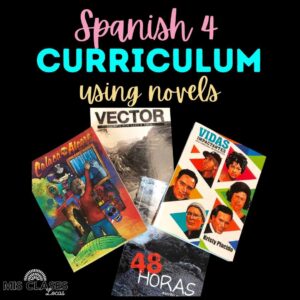
Spanish 4 – Quarter 1
- Super 7 Future Unit / Spanish Future Tense High Frequency Verbs BUNDLE El Futuro Simple
- 48 hours novel unit (new) w/ Pachamama & Environment (if not used in Sp3)
Spanish 4 – Quarter 2
- Literature Circles – full novels
- Introduce Conditional w/ Conditional – FSW
- Sr. Wooly Unit – Encerada en la escuela
Spanish 4 – Quarter 3
- Cajas de Cartón – short story unit with Postville Raid
- Vector – novel unit
Spanish 4 – Quarter 4
- AAPPL test prep
- La Calaca Alegre – novel unit w/ El Orfanato film study
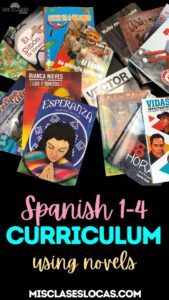
Alternate Hybrid-Block Mis Clases Locas Curriculum
The 2020 school year started out with me teaching on a Hybrid Block. This means I taught a semester of Spanish in a quarter, on a block schedule . I taught 100-minute classes of Spanish 1, Spanish 2, and a combined Spanish 3/4 every day. But, students rotated being in person and online every other day.
My curriculum was much different than in other years since I needed literally everything to be posted digitally on Google Classroom. Also got through about half of what we would have done in a typical year. Due to circumstances, we did very few novels. My new digital High-Frequency verb units were created for that strange year & they SAVED me. See the following blog posts for more details.
- Hybrid Spanish Class- 1st week of school
- Distance Super 7 Verb Unit modifications
- Hybrid Teaching – Teach Online & In-Person
- Block Schedule in Spanish class
So if you need to teach virtually, paperless, or want more ideas on curriculum, please see below for my 2020-2021 Spanish 1-4 Curriculum.
Spanish 1 Semester 1 – in a quarter on a Hybrid Block – Para Empezar – year-round
- Name Game Speedball & 1st Day of Spanish Class
- Super 7 Hybrid Bundle
- Somos 1.1 Flex
- Sr. Wooly – Las Excusas
- Somos 1.2 Flex
- Teri la Tortuga story Super 7 review – El Tuerto Guty
- Sr. Wooly – Billy la bufanda
- Cultural Unit depending on the time of year – Q1 – Day of the Dead & Q2 – Winter Holidays
(Then they had a quarter off of Spanish)
Spanish 1 Semester 2 – in a quarter on Block
Semester 2 started Hybrid but moved to an everyday block schedule. So we got through a lot more this semester with more contact time. I tried to mix up the type of units to keep it fresh with 100-minute classes & we played a lot of Blooket .
- Sweet 16 Hybrid Bundle
- El capibara con botas , Chapters 1-4 , Chapters 5-9 , Chapters 10-14 & Assessments
- Somos 1.3 Flex
- Sr. Wooly – Adonde vas?
- Somos 1.4 Flex
- Sr. Wooly – Diego
- Ferdinand + Somos 1.5 Flex (bullfighting)
Spanish 2 Semester 1- in a quarter on a Hybrid Block – Para Empezar – year round
- 1st Day of Spanish 2
- La Tomatina
- Intro Go! Vive a tu Manera (then between each unit we did an episode of Go!)
- Somos 1.9 Leyendas
- Sr. Wooly – Amnesia
- Somos 1.11 Deportes
Semester 2 started Hybrid but moved to an everyday block schedule. So we got through a lot more this semester with more contact time. The big goal for semester 2 of Spanish 2 was introducing the past tenses. Once we moved to everyday classes, Friday we would watch an episode of Go! Vive a tu Manera
- 1st Day After Winter Break
- Intro Past Tense Ir – FSW & Fue Question Cards + Somos 2.1
- Sr. Wooly – La Dentista (in past tense)
- Felipe Alou Unit – including the film Pelotero
- Sr. Wooly – Victor Trilogy (Guapo, Calvo, Feo) – split between other units
- Somos 2.1 & 2.2 – preterite tense
Spanish 3/4 Semester 1- in a quarter on a Hybrid Block – Para Empezar – year round
Teaching both Spanish 3 and Spanish 4 during the exact same block was quite a challenge. It was my largest class, and it had a huge range of proficiency levels. It included the very high Spanish 4 students, who had been with me for 6 years since 7th grade exploratory & earned I5 on the AAPPL test. Also, the same class period included Spanish 3 students who had not had class for 6 months, since they did 0 virtual work during the shutdown, and who were very much still novice Spanish 2 level.
The Spanish 4 students had watched El Internado the year before & the Spanish 3 students had watched Go! Vive a tu Manera. So together we opted to instead watch Street Food Latin America between units as our show. We found it worked best to do the same content across both levels most of the time but to differentiate among the students.
- 1st Day of Spanish 3/4 – Mi verano preterite review
- Review Past Tense – Preterite Bundle + Somos 2.11 – past tense fable
- Street Food Argentina
- Vida y Muerte Novel Unit – Resources, Introducing Vida y Muerte , Vida y Muerte Lesson Plans
- Street Food Peru
- AAPPL test or El Banco Sr. Wooly for those who chose not to test
Spanish 3/4 Semester 2 – in a quarter on a Block
- Street Food Bolivia
- Literature Circle Unit – using Sp3 – Robo en la noche & Sp4 La Calaca Alegre
- Street Food Colombia
- Sr. Wooly – Billy y las Botas trilogy (we realized these classes had not done Wooly all year)
- Street Food Mexico
- El Medio Ambiente – Mar de Plastico Unit + Pachamama & El camino de Xico
- Sp3 – Sueño hecho realidad E reader & Sp4 – Cajas de Cartón – short story unit
Past years curriculum
- Curriculum Year 6 – Teaching Spanish with Novels
- Curriculum Planning for Upper Level Spanish
- How I Teach Spanish Without a Textbook Curriculum Year 5
- Curriculum Year 4
- Curriculum Year 3
- French Comprehensible Input Curriculum
Allison Wienhold
Allison Wienhold of Mis Clases Locas has a decade of experience as a #deptof1 secondary Spanish teacher in Iowa. She enjoys creating curricula using novels, films, and music. Allison provides professional development to World Language teachers, including being the keynote speaker at MALT and Comprehensible Iowa, and workshop presenter at dozens of state & regional organizations, school districts, AEAs, and virtual conferences.
- Allison Wienhold https://misclaseslocas.com/author/allison/ Appropriate Spanish Language Movies on Netflix
- Allison Wienhold https://misclaseslocas.com/author/allison/ Spanish Teacher Appreciation 2024
- Allison Wienhold https://misclaseslocas.com/author/allison/ Good Cinco de mayo movies
- Allison Wienhold https://misclaseslocas.com/author/allison/ Assess Spanish Speaking
June 14, 2018 at 3:57 pm
Thank you! I can't wait to check this out more…super helpful! 🙂
July 7, 2018 at 3:40 am
Thank you for everything you share! It's a great resource as I delve deeper into my CI practice. Do you read El Capibara con Botas after only doing the Super 7 Unit? Or is it somewhere in between the Somos 1-5 units?
July 7, 2018 at 3:41 am
P.S. Happy Birthday!!
July 26, 2018 at 5:26 pm
Do you have anymore details for the Identidad unit mentioned at the end of quarter 4 for Spanish 4? What resources do you use for that?
September 4, 2018 at 5:43 am
This is so helpful. I have purchased a lot of your resources and this gives me a good outline for when to use them. Thank you so much!
January 7, 2019 at 4:32 pm
Did you make a teachers guide for "Silbon"?
May 16, 2019 at 2:25 pm
Thanks! This is awesome. One question, we are on a semester block schedule at my school, so our "quarters" are only 4.5 weeks long, but we see our students for 90 min every day. I teach level 1, so how would you adjust this pacing for a schedule like that?
May 16, 2019 at 4:12 pm
I would honestly pace the same. The contact hours should be similar.
September 16, 2019 at 6:46 pm
How do you teach a novel in a week? What does your daily lesson plan look like for that?
September 16, 2019 at 8:21 pm
read this post! https://misclaseslocas.blogspot.com/2018/11/reading-novel-in-one-week-in-spanish.html
August 3, 2020 at 9:26 pm
Hi Allison. Thank you for sharing such wonderful resources. I am looking over your scope and sequence for Spanish 1 and I noticed that for quarter 3, you have Somos 1 Unit 19 Biblioburro. I am concerned that this unit might be a bit difficult for the students. What are you thoughts and reasoning for placing Biblioburro in the 3rd quarter of Spanish 1? Again, thank you for all that you do.
August 4, 2020 at 12:37 am
Allison Wienhold 6:37 PM (0 minutes ago) to Norma
We do this unit to introduce the biblioburo (which is a big part of the novel Peter va a Colombia). We do not do everything in the unit, but iot is a good intro to help them understand the book! Allison
Download your FREE Google Slides SER mini unit & join my mailing list

IMAGES
VIDEO
COMMENTS
travel agency. el agente de viajes. travel agent. llamar a. to call. hacer la maleta. to pack a suitcase. confirmar el vuelo. to confirm a flight. el boleto. ticket. el equipaje. ... Spanish 3 unit 1.2 vocab. 46 terms. Cameron_Hansen23. Spanish Vocab Unit 5. 76 terms. Cameron_Hansen23. Saber and Conecer. 28 terms. Cameron_Hansen23.
Study with Quizlet and memorize flashcards containing terms like la agencia de viajes, El/la agente de viajes, el equipaje and more.
Spanish 2 & Spanish 3 Travel Unit: 6 Weeks of Lesson Plans for Travel, Vacation. Spanish Youth Hostels: Presentation, Video, Reading. Spanish Seal of Biliteracy Listening & Speaking for Travel and Vacations. Other Posts You May Like. Youth Hostel Lesson Plan For Spanish Class. Spring Lesson Ideas for Spanish Class. Spanish Class Seniors
Check out the learning objectives and activity count here! All of these activities are included in these lesson plans, along with many more which cannot be bought separately. 1. Spanish Irregular Preterite e-i Interactive Google Slides with Pear Deck. 2. Spanish Youth Hostels: Presentation, Video, Reading. 3.
One Stop Shop For Educators Georgia Department of Education Kathy Cox, State Superintendent of Schools Spanish III Unit 1 Travel Page 3 of 9
Spanish 3 Vocabulary Lists. ... SP 3 Vocab Unit 3; SP 3 Vocab Unit 4; SP 3 Vocab Unit 5; SP 3 Vocab Unit 6; SP 3 Vocab Unit 7; SP 3 Vocab Unit 8; Home; Spanish 3 Syllabus; Spanish 3 Vocabulary Lists; Bishop Montgomery High School. 5430 Torrance Blvd., Torrance, CA 90503. Phone: (310) 540-2021 .
Tags. Albert's Spanish 3 course includes 86 types of tags, vocabulary, skill, and grammar. These are words or phrases that provide information about what a question covers, such as nationalities or por-v-para. Tags provide another easy way to search for relevant content in our course library. Simply search using the Tags button at the top ...
Spanish 2 and 3 classes at a high school level differ in the level of material presented and the difficulty of assignments. Spanish 2 classes typically cover intermediate-level topics, such as basic conversation and grammar, while Spanish 3 classes usually focus on more intermediate-advanced topics, such as complex verb conjugation and dialogues. Additionally, Spanish 3 […]
This is a free study guide on Spanish 3! Simple Studies has 200+ study guides including countless more Foreign Languages resources! Home. Volunteer. Outreach Team Content Team Application Blog Team Join Us. Resources. Notes College Packing List Zoom Calls Essay Editing Service Hours Scholarships All Resources.
Frameworks are intended to be models for articulating desired results, assessment processes, and teaching-learning activities that can maximize student achievement relative to the Georgia Performance Standards. They may provide Enduring Understandings, Essential Questions, tasks/activities, culminating tasks, rubrics, and resources for the units.
April 28, 2013. We just finished an introductory unit on migration and undocumented immigration in Spanish A. We focused on high-frequency, regular -ar verbs that connect with travel, and we started building their familiarity with the verbs using the story script for El viajero. Afterward, we spent a few days using by-design and authentic ...
Rochester High School is one of three high schools in the Rochester Community Schools district, located in Rochester Hills, Michigan. In 2014, the racial profile of students and staff was out of 1643 individuals total. From this number, 1177 were white, 144 were African American, 182 were Asian Hispanic, 77 were American Indian, 1 was Pacific ...
Finish writing 12 sentences about a Spanish-speaking country you want to visit. Talk about how you would travel there, how you would travel while you are in the country, and what you would like to see and do there. Use travel vocabulary and the conditional tense. Practice reading it. Present your report to an audience and receive a score.
Study with Quizlet and memorize flashcards containing terms like la seguridad, el destino, la llegada and more.
Spanish 1 or 2 - create a CI curriculum. Super 7 Units - Depending on the previous knowledge of your students, I would start with a Super 7 Unit either present, either as a review or to introduce important words. You could even keep going with the Sweet 16 as well. SOMOS 1/2 Units - Then I would do units from Martina Bex's SOMOS curriculum.
These travel unit reading passages are great for helping students improve their Spanish reading comprehension skills. Your students will be able to learn about the culture and the food of different countries in Latin America. Included: ** Originally, these resources only included the reading passages. Now, I'm working to update them all to ...
Unit Plan: Travel in Spanish - Free download as Word Doc (.doc / .docx), PDF File (.pdf), Text File (.txt) or read online for free. A 3-lesson unit on Travel-related vocabulary in Spanish.
1. Mini-lectures using relevant examples Modeling Practicing with other students in groups Textbook & workbook activities Oral presentations Writing (using different forms) Listening activities Watching videos or DVDs. 1. Vocabulary quizzes Grammar quizzes Unit Tests Exams Oral presentations (rubrics) Creative writing (rubrics) Special Projects ...
Tuesdays, Sept. 24-Dec. 10, 5:30-6:30 p.m. CT (No virtual conversation on Nov. 26) Tuesdays, Sept. 24-Dec. 10, 6:45-7:45 p.m. CT (No virtual conversation on Nov. 26) Below are the main themes and outcomes for each unit. Each unit also contains teaching videos, 10-15 listening activities, an extended reading activity, practical exercises ...
Spanish 3 Welcome to the Third Edition of Pimsleur's Spanish 3. Languages are constantly evolving and reflecting changes in their societies, and Spanish is no exception. The Spanish you hear spoken in Latin America today is less formal than in the past, and this new edition reflects that general trend. Of course, speaking politely and addressing
Spanish 1 Quarter 1. Week 1 plan with Proficiency Introduction using 1st Week of Spanish Back to School BUNDLE. Super 7 Present Unit Bundle or from my shop Super 7 Present Tense Spanish BUNDLE. During Hispanic Heritage Month - song of the day. SOMOS units 1-3 review or do quickly + unit 5 (maybe Ferdinand)